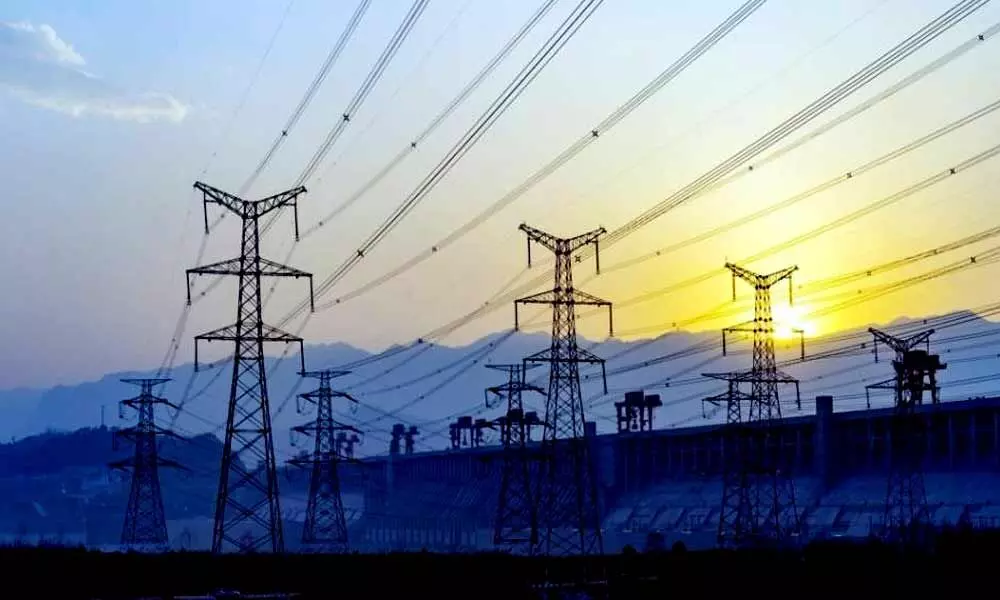Focus on renewable sources key to tide over energy crisis in India
Lack of foresight in exploiting conventional energy and not backing it up with alternatives can prove catastrophic
image for illustrative purpose

We need to come up with a comprehensive perspective towards the long-term problem of energy production, consumption and distribution in the country. This has to take place under effective legal regimes and a proactive citizenry. The incredible reserves of renewable energy our country holds can spell inestimable victories for our country, reduce pollution, energise the economy and elevate living standards
Recent headlines have been abuzz with the threat of energy shortage in India. As the economy recovers from the impact of the pandemic, a massive surge in energy demand has triggered an unprecedented fuel shortage at the country's coal-fired stations. According to data from the Central Electricity Authority of India, nearly 80 per cent of the country's coal-fired plants are in the critical, or "supercritical" stage, meaning their stocks could run out in a few days. However, the menace of the energy crisis has not been new to India.
Back in the 1970s, articles were fervently and frequently written about the disparities in per-capita consumption of energy across Indian society. Low domestic oil production and increasing imports had beset the economy then. The concerns regarding production and expenditures have changed and yet remained alive through the decades. In fact, there are new issues of lack of capacity-building to withstand shocks, inability to manage resources in tandem with demand and inaccessibility to people. In India, where coal-fired power stations account for nearly 70 per cent of the electricity generation, the situation seems beyond grim today. As NDTV reports, of the 104 thermal plants monitored daily, 15 with a generation capacity of 14,875 MW had zero days of coal stocks on September 30, while another 39 with a capacity of 52,530 MW had stocks of less than three days. Another 6,960 MW of capacity is facing plant outage due to the unavailability of coal.
However, as noted by The Guardian, experts have emphasised that the power issues are not due to a shortage of domestic coal production. Over the past two decades, domestic coal production in India has continued to rise exponentially. Energy providers and India's state-owned coal producer, Coal India Limited, have instead been accused of failing to stockpile sufficient amounts to meet the predicted rise in demand with recovery from the pandemic. This points towards the first problem we need to assess: a lack of gauging demand and managing resources effectively.
India is blessed with generous treasures in terms of energy resources. From reserves of coal to minerals to fossil fuels and productive capabilities for energy generation, the country has abundant potential. However, as the current trouble highlights, a lack of foresight in exploiting conventional energy and not backing it up with alternatives can prove catastrophic. Vibhuti Garg, the lead Indian economist for the Institute for Energy Economics and Financial Analysis remarked that over the past year renewable energy installation slowed down and that if the government had focused on increasing the capacity of renewables such as solar, wind and hydro, the increased demand could have been met through renewable energy and this crisis could have been averted.
In the context of basic energy statistics and energy balances, the term "energy flow" refers to the production, import, export, bunkering, stock changes, transformation, energy use by energy industries, losses during the transformation, and final consumption of energy products within the territory of reference for which these statistics are compiled. We need to come up with proactive policy measures which monitor energy flows in correlation with stocks of conventional and non-conventional energy resources. Simultaneously, prediction of demand as the country undergoes ebbs and flows is necessary. Laws and policies in this regard must be sought from authorities.
Beyond governance, interventions by the civil society, citizens and the media are also indispensable to keep us vigilant. The media must dedicate itself to keep assessing these risks throughout the year and keep alerting citizens and governments of what might occur in cases of inaction. Citizen intervention must take place through formation of collectives and the empowerment of currently active civil society efforts. In general, awareness about energy resources is needed. For instance, if India is supposed to meet its climate goals, the country will need to redirect its energy production from conventional to unconventional energy resources, which will be a gargantuan shift. To enable such shifts, all ends of Indian society and authority spectrums must come together in a larger commitment towards awareness.
To sum up, we need to come up with a comprehensive perspective towards the long-term problem of energy production, consumption and distribution in the country. This has to take place under effective legal regimes and a proactive citizenry. The incredible reserves of renewable energy our country holds can spell inestimable victories for our country, reduce pollution, energise the economy and elevate living standards. Energy crisis can be a thing of the past if we orient ourselves towards renewability and good management and we must make this leap.
(The author is Chief Impact Officer at Recykal Foundation)

